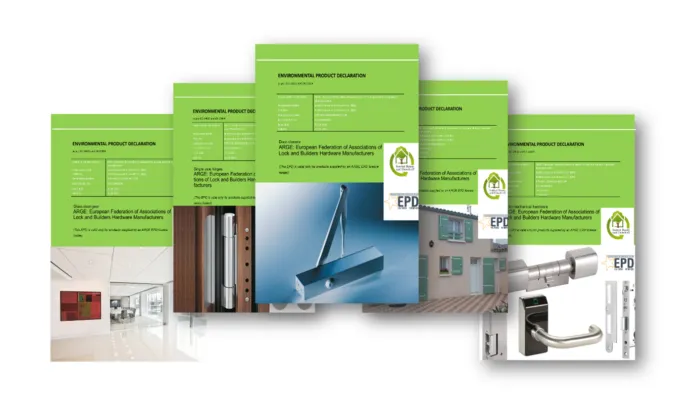
Tamworth-based trade association, Door & Hardware Federation (DHF) is once again stressing the importance of Environmental Product Declarations (EPD). An EPD is an independently verified and registered document that communicates transparent and comparable information about the life-cycle environmental impact of products. In summary, it measures the environmental ‘footprint’ of a product.
EPD demonstrate the results of a Life Cycle Assessment (LCA), detailing ‘cradle to grave’ environmental impact of all processes involved with the manufacture of a product. This can include extraction and processing of raw materials, transport, all elements of the manufacturing process, dismantling and waste disposal.
“Although it is not yet compulsory to use EPD in the UK, the market is increasingly self-regulating as manufacturers seek to demonstrate carbon transparency and market their products accordingly,” explains DHF’s Commercial Director, Patricia Sowsbery-Stevens. “Participation in the EPD programme is essential if the construction industry is to meet the growing demand for greater sustainability. We are delighted to be able to support our members by offering generic EPD.”
Back in June 2017, DHF was widely considered ‘ahead of the game’ in launching 14 generic EPD (in collaboration with ARGE) – locks, door and window handles, hinges (single axis), lock cylinders, sliding door gear, window fittings, door closers, panic exit devices, shutter hardware, letter boxes, padlocks, glass door gear, electromechanical hardware, and push button locks. Since then, the federation has been educating and informing its members about the role and growing importance of EPD in the sustainability process; a complicated subject, DHF has been plugging the ‘information gap’. This has effectively enabled members of the Building Hardware Group to meet changing market conditions.
“EPD provide manufactures with positive credentials that are key differentiators in today’s market, and a powerful way to raise an organisation’s profile and demonstrate environmental commitments,” continues Patricia. “In short, they enable the manufacturer to provide quantified data on their product’s environmental impacts, such as embodied carbon, ozone, acidification and more, surpass customer demands and specifications with increased transparency, promote a product’s reputation through internationally recognised standards, support innovative product development, such as improving efficiency for energy, materials and transport costs, enable whole life cycle management, and become recognised by building assessment schemes. In addition, they can inform building information modelling (BIM) software to make comparisons and assess design options that improve a building’s environmental performance.
“DHF continues to support the green agenda and the increasing move towards green certification,” concludes Patricia. “EPD are considered crucial in demonstrating continued sustainability and providing reliable information so one product can be compared with another by looking at the various lifecycle stages.”
Currently, the UK has set a target to achieve net-zero carbon emissions by 2050.



